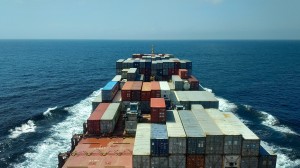In the process of freight forwarders quoting to customers, the issue of direct vessel and transit is often involved. Customers often prefer direct ships, and some customers even do not go by non-direct ships.
In fact, many people are not clear about the specific meaning of direct sailing and transit, and they take it for granted that direct sailing must be better than transshipment, and direct sailing must be faster than transshipment.
What is the difference between direct ship and transit ship?
The difference between direct shipping and transit is whether there is an operation of unloading and changing ships during the voyage.
Direct sailing ship: The ship will call at many ports, but as long as the container does not unload and change the ship during the voyage, it is a direct sailing ship. Generally speaking, the sailing schedule of the direct sailing ship is relatively stable. And the arrival time is near the expected arrival time. Sailing time is usually attached to the quotation.
Transit ship: During the voyage, the container will be changed at the transshipment port. Due to the loading and unloading efficiency of the transshipment terminal and the impact of the schedule of the subsequent large ship, the container shipping schedule that usually needs to be transshipped is not stable. In view of the impact of the efficiency of the transshipment terminal , the transfer terminal will be attached in the quotation.
So, is direct vessel really faster than transit? In fact, direct shipping is not necessarily faster than transshipment (transit), because there are many factors that affect the speed of transportation.

Factors affecting shipping speed
Although direct ships can save transit time in theory, in practice, the speed of transportation is also affected by the following factors:
1. Arrangement of flights and ships: Different airlines and shipping companies have different arrangements of flights and ships. Sometimes even direct flights may have unreasonable schedules, resulting in longer shipping times.
2. Loading and unloading time: at the port of origin and destination, the loading and unloading time of goods will also affect the transportation speed. The loading and unloading speed of some ports is slow due to equipment, manpower and other reasons, which may cause the actual transportation time of the direct ship to be longer than expected.
3. Speed of customs declaration and customs clearance: Even if it is a direct vessel, the speed of customs declaration and customs clearance will also affect the transportation time of the goods. If the customs inspection of the destination country is strict, the customs clearance time may be extended. New customs policies, tariff changes, and technical standard upgrades significantly affect customs clearance speed. In April 2025, both China and the United States imposed tariffs, and the customs inspection rate increased, which will lead to a longer arrival time for goods.
4. Sailing speed: There may be differences in sailing speed between direct sailing ships and transshipment. Although the direct sailing distance is shorter, the actual shipping time may still be longer if the sailing speed is slower.
5. Weather and sea conditions: The weather and sea conditions that may be encountered during direct sailing and transshipment are different, which will affect the speed and safety of sailing. Inclement weather and sea conditions may cause actual shipping times for direct ships to be longer than expected.
6. Geopolitical risks: Waterway control and geopolitical conflicts lead to route changes and capacity contraction. The detour shipping route caused by the Red Sea crisis in 2024 extended the shipping cycle of the Asia-Europe route by an average of 12 days, and the war risk premium pushed up the overall logistics cost.
Conclusion
To accurately estimate transit times, several factors need to be considered. In actual operation, the most suitable mode of transportation can be selected according to factors such as the characteristics of the goods, shipping needs and costs. Contact us to learn more about shipping time from China to your destination!
Post time: Jun-07-2023












